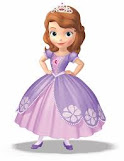Game Fun
Games can be described by the 3 components Mechanics, Dynamics, and Aesthetics (MDA) or otherwise stated as rules – system – “fun”. The three reading selections this week and the synopsis below all address the term “fun” in relation to game design.
There are eight types of Fun outlined by the MDA. These eight are both a source of reference and player experience that blend together in many ways, and essentially what makes a game engaging and enjoyable.
Figure 1: Eight kinds of Fun
Both Oxford and Merrian dictionaries define Fun as an enjoyment, delight but within the context of a game it refers to a form of pleasurable entertainment. MDA papers define the '8 kinds of fun' sensation, fantasy, narrative, challenge, fellowship, discovery, expression, and submission, remain a source of reference and possibly the most popular list of player interactions combining in various forms to attract each player to a particular game.
Nicole Lazzaro presents four types of fun that are involved in defining how fun a game can be for different players.
Easy Fun: This is essentially for players who are new to a game who want to satiate their curiosity.
Hard Fun: It is essentially for people who love a good challenge.
People Fun: Amusement from competition and cooperation. Meaning Co-op.
Serious Fun: Excitement from changing the player and their world.
Figure 2: From A Theory of Fun 10 Years On: Fun Is Just Another Word for Learning
Flow also has an influence on the feeling of “fun”. The concept of Flow is characterized as a balance between skill-challenge and the individual's enjoyment. When in flow the player is focused on the activity they are participating in. This gives a sense of reward and promotes further engagement in the activity.
Flow theory provides a good framework for analysing motivation in gaming activities, in particular enjoyment, engagement and positive affect.
Figure 3: Graph showing the flow zone, where the game is not too easy where the players abilities are very high (Boredom), but also not too hard that the player is unable to complete the challenge (anxiety).
Fun has everything to do with learning. “Fun is just the dopamine in our brains firing when we are presented with a new situation to learn from” Koster (2005) discussed about this saying that the different patterns that we take in helps our brain especially when it comes to enjoying a video game cause once you understand the many patterns that it offers you your brain has nothing to feed off making it unenjoyable to play anymore. Fun provides the brain with feedback of the game allowing it to observe and learn different patterns/sequences within.
Games help people to become more imaginative, engaging with their creative side of the brain and creating new ideas/designs that can be implemented in games.
Being more creative when developing your game will help you see what challenges the player may face and what ones will help further improve the progression and also add to the player's determination to complete the story.
Balance is an even proportion or distribution of elements to keep them at a steady rate. When playing chess, we learn about strategy, tic tac toe teaches us about reading people’s mind about their next move and when we play games like civilisation or sim it teaches us resource management. When playing games we should be provided with a balance of fun and challenges. These are called either type 1 or type 2 games and these have their own unique way of being played. The type 1 games involve strategy and thinking to complete these games such as in Chess or Poker whereas type 2 games mainly involve quick reflexes and combo memorization in games such as “Mortal Kombat and Call of Duty”
The GameFlow model shows that the inherent structure of games is associated with the experience of flow and enjoyment during gaming, at least for strategy games.) As stated by Kaye and Byrce (2012) “a large body of research has investigated the negative effects of playing video games” yet “there has been less examination of the psychological experiences associated with the activity”
We come across different types of fun in games that fulfil our amusement. Fun in games is provided in many different ways for example through socialising with friends or exploring the game world. People experience different emotions when driven by gameplay. Gameplay creates opportunities for “Flow”, “balance” and “learning”.
References:
Velev, A., 2016. Gamification Design: What’S Fun Got To Do With It?. [online] Megamification. Available at: [Accessed 16 November 2020].
READING WEEK 8




Comments
Post a Comment